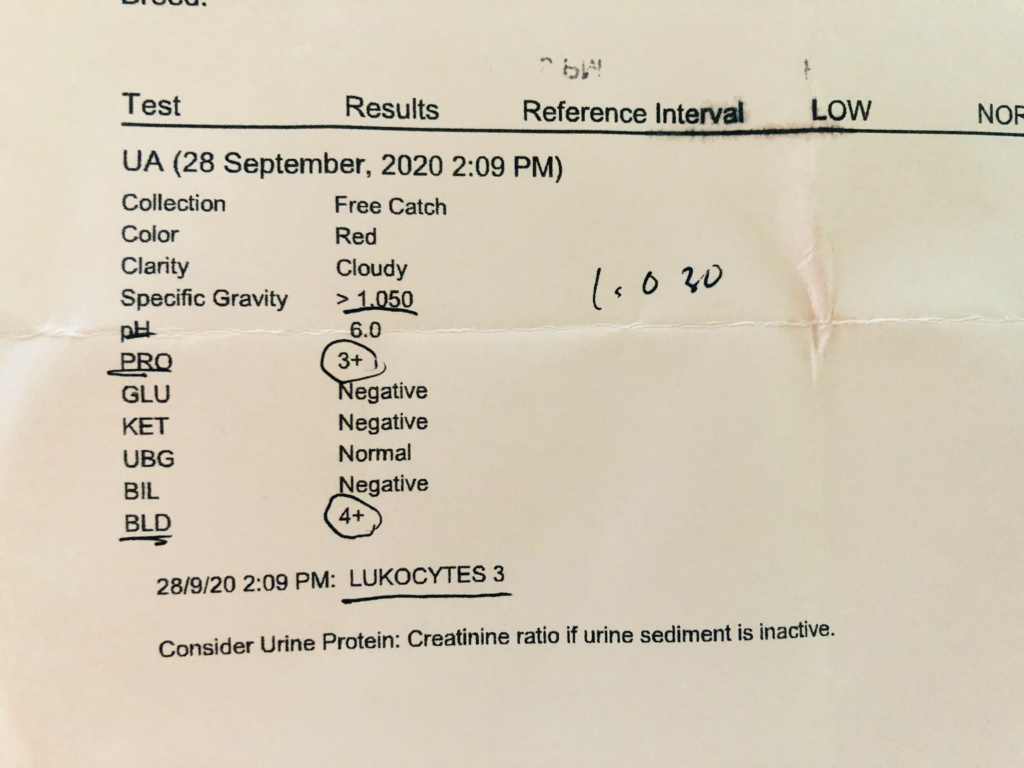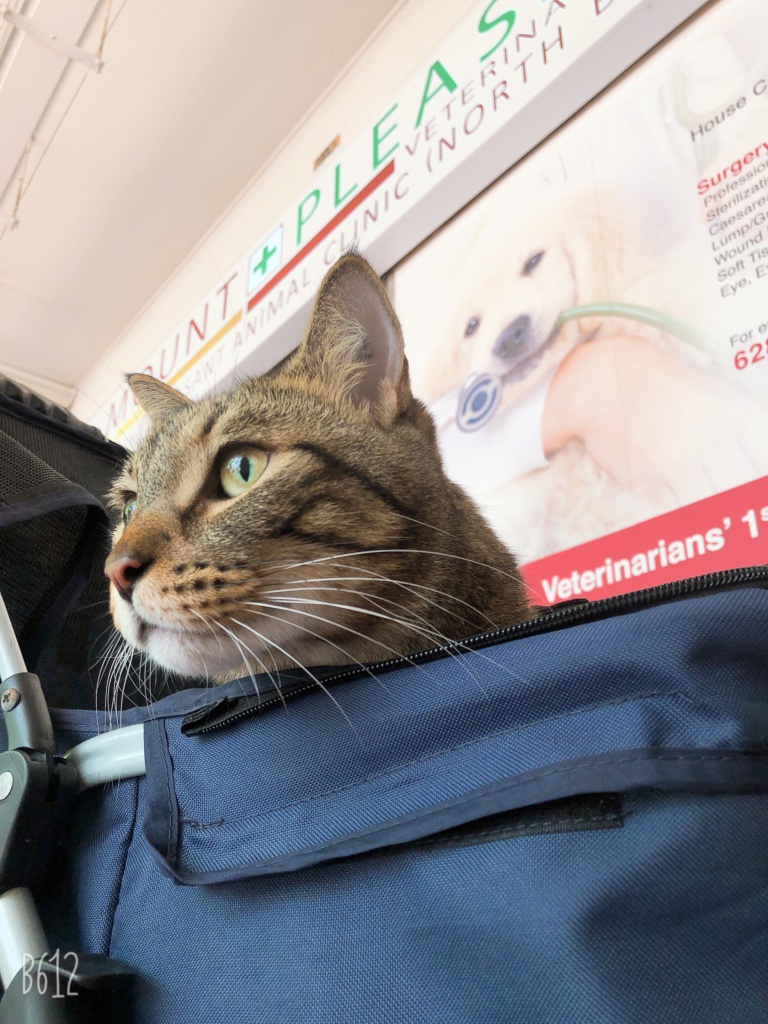Personal experience
I am a worrier. So when my furbaby falls sick, I will feel as if I am ill too. I believe pet owners are generally very sensitive when your furbaby is acting out of the ordinary, or feeling unwell.
As for Simba, his first sign was peeing on the couch.
Simba is 100% litter trained, and when he does things like peeing outside of his litter box, it’s usually his way of telling me that he is not feeling well, and that I better do something about it.
Subsequently, I noticed that Simba started going to the litter box very frequently – like almost once every 10 minutes, and each time he only pees a very small amount. What was more worrying was, Simba’s urine appears orange / red, which looked like there was blood in his pee. I collected the sample of his urine and immediately took him to the vet. His urine test showed that he has a urinary tract infection.

This was the urine test results. Let me share a little on what the vet explained to me.
The first red flag is the colour of his urine – which is red. This is abnormal as the normally the colour should be either yellow or orange. Red means there is blood present.
Secondly, the PRO level (which is the amount of protein present in his urine) is 3+, max being 4. By right, there actually shouldn’t be any protein in cat’s urine, so this is not a good sign either.
Thirdly, the BLD level (which is the amount of blood detected) is 4+, which is the max it can go. So since the colour if the urine is already RED, naturally the amount of blood present would be quite high.
Last red flag would the amount of LUKOCYTES, which is the amount of white blood cell present. When there is an infection going on, there is going to be white blood cells present to try to fight off the infection. So 3 out of 4 is again a very high indicator.
Well, the good news is that his pH level is still fairly normal. I think if it goes up to 7 or 8 (more alkaline) then it would be a cause of concern as well.

Simba’s course of treatment would be anti-inflammatory and antibiotics injections + some oral medication. He took about 5 days to fully recover after treatment, and I will be bringing him to a review visit to the vet in two weeks to make sure that everything is back to normal.
In terms of medical bills, it cost about $250 in total, including consultation, injection and oral medication. This is the price range for Mount Pleasant vet.
So, all that being said, let’s look deeper into some facts about Feline UTI
Who are more at risk?
Feline UTI are generally more common in a multi-cat household, and it affects older cats more than kittens, and more in females than males.
The reason it affects females more is due to the anatomy of their urinary tract. Male cats have narrower urethra than female cats. When UTI occurs, the bacteria can cause a change in your cat’s urine pH, which will then lead to the formation of crystals in their urine. If those crystals become lodged in the narrow urethra of a male cat, it can cause a urinary blockage, which can result in serious consequences.
Signs and symptoms
So what are the things we need to look out for?
- Visiting the litter box very frequently (i.e. more than usual)
- Prolonged squatting in litter box
- Inability to urinate or only passing a small amount of urine
- Blood in the urine
- Attempting to urinate in other parts of the house
- Drinking more water than usual
- Not eating as much as usual
The signs are usually quite clear and easy to identify, Simba checked quite a few of the boxes above.
What to do if you suspect your furbaby has Feline UTI?
If you notice any of the symptoms above, call your vet to book an appointment as soon as possible. In the meantime, try to collect a urine sample at home in a sterile container and bring it to the vet with you. It would be advised for the urine sample to be collected within 2 hours of the vet visit.
If the problem remains untreated, it can lead to serious problems such as kidney failure and/or bladder rupture. So it shouldn’t be ignored!!
What now?

Simba is fully recovered, and back to his normal routine (no more peeing on the bed or couch yay!)
Hope this article give you a better idea of what feline UTI is, and what are the things you should be looking out for if you suspect your furbaby may be unwell :/
* This blog is designed to be a community where pet owners can learn and share. The views expressed in each post are the opinion of the author and not necessarily endorsed by Pawjourr. Always consult your veterinarian for professional advice.
